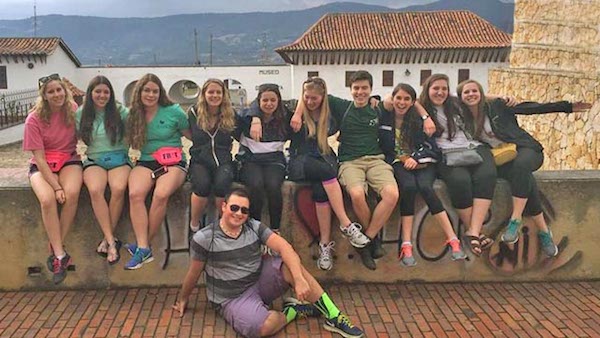Talking about your country seems like such a simple task: culture, food, costumes and art. But when you come from such a complex country like mine — Colombia — the “simple” categories can disappear. Every single fact has a deep and sometimes tough story to tell.
A few weeks ago, an opportunity presented itself. After a serendipity kind of evolution, I found myself surrounded by young and bright eyes craving knowledge, empathy and with the expectations that always come with something new. I had the opportunity the play the role of “ambassador” of my country at Camp Be’chol Lashon. It was one of the most meaningful experiences I have ever had.
Colombia is full of colors, rhythms and stories that sometimes don’t seem appropriate to tell to young kids, but it’s definitely worth the try. After discussing it with the directors of the Camp, we decided we where going to work in three specific topics: street art, cooking traditions and of course, dancing.
Dancing, was the first activity of the day. The connection between the way you feel and the way move is definitely a big part of being Colombian. I decided I was not going to do a structured dance class; I wanted the kids to feel the music and follow some basic steps but always making it their own. Carlos Vives, salsa and some music from the Caranaval of Barraquilla are the masters of our movements. The magic of this session was that at some point the joyfulness of the Colombian rhythms took over the salon and all problems seem far behind.
In the street art session, we talked about how conflict came to Colombia’s cities and how the street art worked as a catalyst for thousand of stories that otherwise would have been forgotten and silent. Having the opportunity to witness this kids building identity around the word COLOMBIA, was priceless.
At the end of they day we decided to make Arepas, a typical Colombian dish that anyone can enjoy. Not only was the cooking fun, but I also enjoyed seeing the hesitant attitude toward eating something new that turned into a craving for more! It was a good reminder that sometimes even though we have a hard time accepting something new, we can be happily surprised.
Seeing how Jewish culture, our culture, works as a bridge building understanding of others is the most powerful tool we have. Because even though we look different and we speak different languages, we all feel the same, and ultimately we move at the same rhythm.






